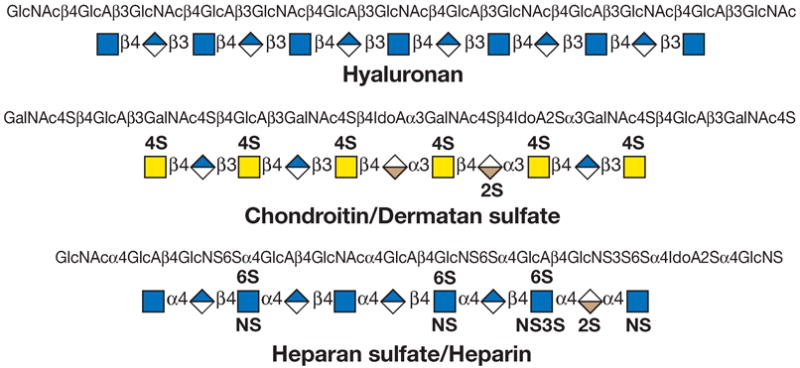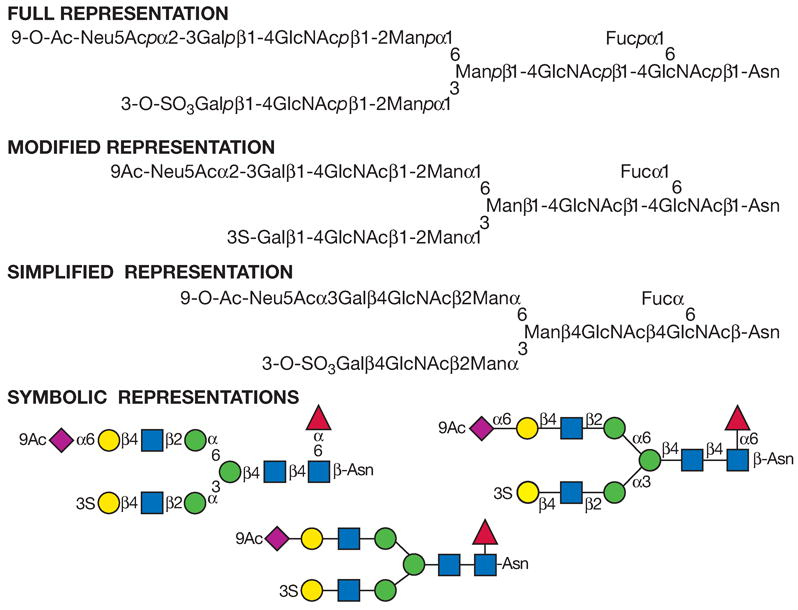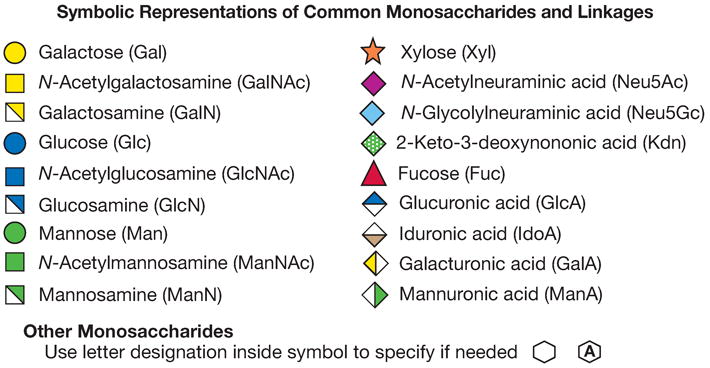Figure 12.1.7. Recommended symbols and conventions for drawing glycan structures.



(Top panel) Each monosaccharide class (e.g., hexose) has the same shape, and isomers are differentiated by color/black/white/shading. The same shading/color is used for different monosaccharides of the same stereochemical designation, e.g., Gal, GalNAc, and GalA. To minimize variations, sialic acids and uronic acids are in the same shape, and only the major uronic and sialic acid types are represented. When the type of sialic acid is uncertain, the abbreviation Sia can be used instead. Only common monosaccharides in vertebrate systems are assigned specific symbols. All other monosaccharides are represented by an open hexagon or defined in the figure legend. If there is more than one type of undesignated monosaccharide in a figure, a letter designation can be included to differentiate between them. Unless otherwise indicated, all of these vertebrate monosaccharides are assumed to be in the D configuration (except for fucose and iduronic acid, which are in the L configuration), all glycosidically linked monosaccharides are assumed to be in the pyranose form, and all glycosidic linkages are assumed to originate from the 1-position (except for the sialic acids, which are linked from the 2-position). Anomeric notation and destination linkages can be indicated without spacing/dashes. Although color is useful, these representations will survive black-and-white printing or photocopying with the colors represented in different shades (the color values in the figure are the RGB color settings obtained within PowerPoint). Modifications of monosaccharides are indicated by lowercase letters, with numbers indicating linkage positions, if known (e.g., 9Ac for the 9-O-acetyl group, 3S for the 3-O-sulfate group, 6P for a 6-O-phosphate group, 8Me for the 8-O-methyl group, 9Acy for the 9-O-acyl group, and 9Lt for the 9-O-lactyl group). Esters and ethers are shown attached to the symbol with a number. For N-substituted groups, it is assumed that only one amino group is on the monosaccharide with an already known position (e.g., NS for an N-sulfate group on glucosamine, assumed to be at the 2-position). (Middle panel) Typical branched “biantennary” N-glycan with two types of outer termini, depicted at different levels of structural details. (Bottom panel) Some typical glycosaminoglycan (GAG) chains. (reproduced with permission from the Consortium of Glycobiology Editors, originally Figure 1.5 in Varki A, Cummings RD, Esko JD, Freeze HH, Stanley P, Bertozzi CR, Hart GW, Etzler ME, eds. Essentials of Glycobiology. Cold Spring Harbor, NY: Cold Spring Harbor Laboratory Press, 2009)
